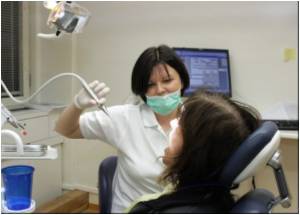The most common form of oral or facial pain, affecting over 10 million Americans is temporomandibular joint disorder (TMJD).

Aside from cases related to trauma, little is known about the root cause of TMJD. The researchers focused on TRPV4, an ion channel protein that allows calcium to rapidly enter cells, and its role in inflammation and pain associated with TMJD.
"TRPV4 is widely expressed in sensory neurons found in the trigeminal ganglion, which is responsible for all sensations of the head, face and their associated structures, such as teeth, the tongue and temporomandibular joint," said senior study author Wolfgang Liedtke, M.D., PhD, associate professor of neurology and neurobiology at Duke. "This pattern and the fact that TRPV4 has been found to be involved in response to mechanical stimulation made it a logical target to explore."
The researchers studied both normal mice and mice genetically engineered without the Trpv4 gene (which produces TRPV4 channel protein). They created inflammation in the temporomandibular joints of the mice, and then measured bite force exerted by the mice to assess jaw inflammation and pain, similar to how TMJD pain is gauged in human patients. Given that biting can be painful for those with TMJD, bite force lessens the more it hurts.
The mice without the Trpv4 gene had a smaller reduction in bite force -- biting with almost full force -- suggesting that they had less pain. In normal mice there was more TRPV4 expressed in trigeminal sensory neurons when inflammation was induced. The increase in TRPV4 corresponded with a greater reduction in bite force.
The researchers also administered a compound to normal mice that blocked TRPV4, and found that inhibiting TRPV4 also led to smaller reductions in bite force, similar to the effects of the mice engineered without the Trpv4 gene.
Advertisement
"Remarkably, the damage is the same but not the pain," Liedtke said. "The mice that had the most TRPV4 appeared to have the most pain, but they all had similar evidence of temporomandibular joint inflammation and bone erosion in the jawbone as a consequence of the inflammation."
Advertisement
Source-Eurekalert















